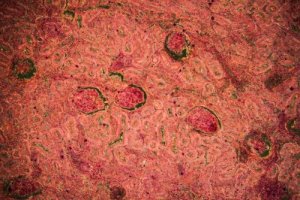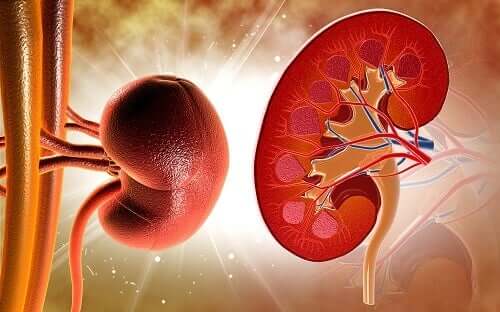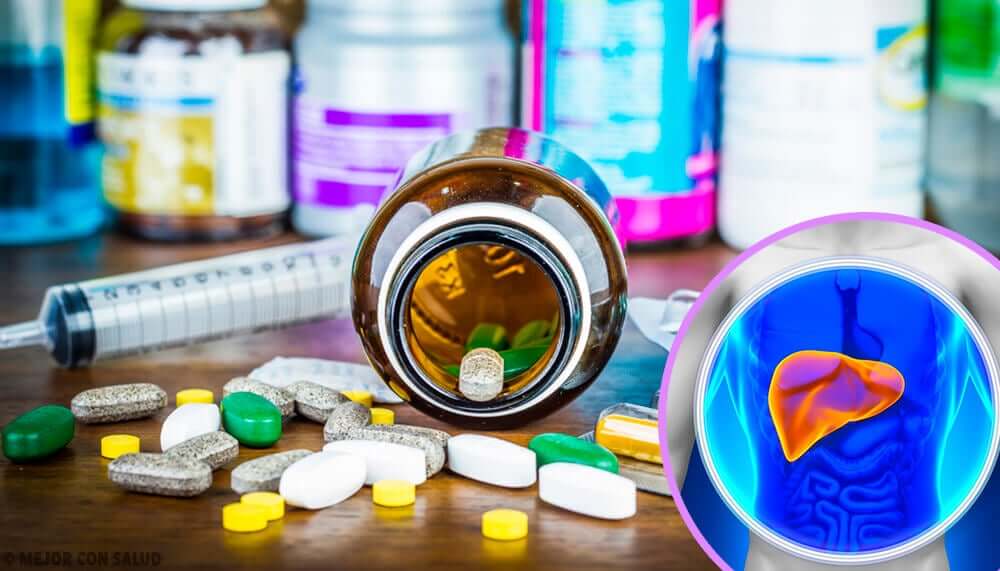Renal Tuberculosis: Diagnosis and Treatment

Renal tuberculosis is a chronic condition. Generally, the bacterium Mycobacterium tuberculosis causes it. It can hurt both kidneys, causing kidney failure and even death.
Often, it starts in the lungs and happens in lots of patients with pulmonary tuberculosis. Mycobacterium tuberculosis reaches the kidneys by blood, direct contact, and the lymphatic system. In fact, renal tuberculosis is the second most common form, besides pulmonary.
The first parts affected by renal tuberculosis are the kidneys, epididymis and prostate. However, it can affect genitourinary organs as well.
Symptoms of renal tuberculosis
Some of the most common symptoms are:
- Kidney pain
- Frequent and painful urination
- Blood in the urine
Most patients have a positive reaction to tuberculin. In addition, they also test positive for bacillus Koch in their urine. Also, for men, it’s usually connected to the epididymis. It’s not as common, but it’s also associated with prostatitis.
Diagnosis

In order to diagnose renal tuberculosis, specialists will have to look under a microscope. They need to take a culture and isolate it in order to test it.
Microbial diagnosis
The diagnosis happens in three steps:
- Demonstration of acid-alcohol resistant bacilli
- Isolate the bacteria
- Sometimes, specialists need to test to see if it’s sensitive to anti-tuberculosis drugs
In addition, these bacteria need special staining techniques in order to identify them. This is because they have lots of lipids in their cell walls. Also, they are slow-growing. Therefore, specialists need to grow the cultures for 8 weeks.
Staining the cultures and looking at them under a microscope is the easiest and fastest procedure. In fact, it’s usually the first diagnosis.
Also check out: Broad-Spectrum Antibiotics
Cultivating and identifying Mycobacteria
There are different types of culture media: solids, radiometric liquids, non-radiometric and biphasic liquids. Nowadays, the most sensitive and fastest ones are solid and liquid mediums.
The most effective techniques are lysis-centrifugation and radiometric techniques. In fact, specialists use it for severe cases of HIV and fevers with unknown causes.
New diagnostic techniques: Gene amplification of DNA or RNA
These techniques make it very quick to diagnose. They make millions of copies of certain parts of the cells.
In vitro sensitivity studies
Additionally, there are different methods for in vitro studies.
Pathological diagnosis
The pathological diagnosis consists of looking at the samples under a microscope. Specialists get these samples by doing a biopsy.
Treating renal tuberculosis

To treat this, you need to make sure it’s not resistant to certain drugs. Also, not following your treatment or not sticking to it fully makes it easier for your body to build up a resistance.
In addition, you have to follow the treatment for a while to prevent it from coming back. The best way to monitor your response to treatment is by testing the bacteria.
In fact, there are two groups of drugs for treating renal tuberculosis. These groups are based on how well they work and their side effects:
- First choice for treating initial cases
- Bactericides: isoniazid, rifampicin
- Bacteriostatic: ethambutol
- Second choice drugs: these are less active, and they have more side effects. Doctors prescribe them for resistant forms, or in special cases. However, some are hard to come by, and only trained professionals should use them. For example, some of these drugs are:
- Kanamycin
- Amikacin
You might also be interested in: This Natural Homemade Antibiotic Can Help Keep Infections Away
Side effects of renal tuberculosis treatment
The most common side effect is liver damage (hepatotoxicity). In fact, this could happen from using isoniazid and rifampicin.
The mild side effects are common. If you experience them, you don’t need to stop the medication. On the other hand, severe side effects might mean that you need to stop taking the drug or change your treatment. However, they only happen in 3-5% of patients with short treatments.
Experts still don’t know much about renal tuberculosis. The reason for the differences between patients in developed and developing countries still isn’t clear. Scientists still need more in-depth study into the condition.
All cited sources were thoroughly reviewed by our team to ensure their quality, reliability, currency, and validity. The bibliography of this article was considered reliable and of academic or scientific accuracy.
-
Highsmith, H. Y., Starke, J. R., & Mandalakas, A. M. (2018). Tuberculosis. In Kendig’s Disorders of the Respiratory Tract in Children. https://doi.org/10.1016/B978-0-323-44887-1.00029-8
-
Koch, A., & Mizrahi, V. (2018). Mycobacterium tuberculosis. Trends in Microbiology. https://doi.org/10.1016/j.tim.2018.02.012
-
Daniel, T. M. (2006). The history of tuberculosis. Respiratory Medicine. https://doi.org/10.1016/j.rmed.2006.08.006
This text is provided for informational purposes only and does not replace consultation with a professional. If in doubt, consult your specialist.








